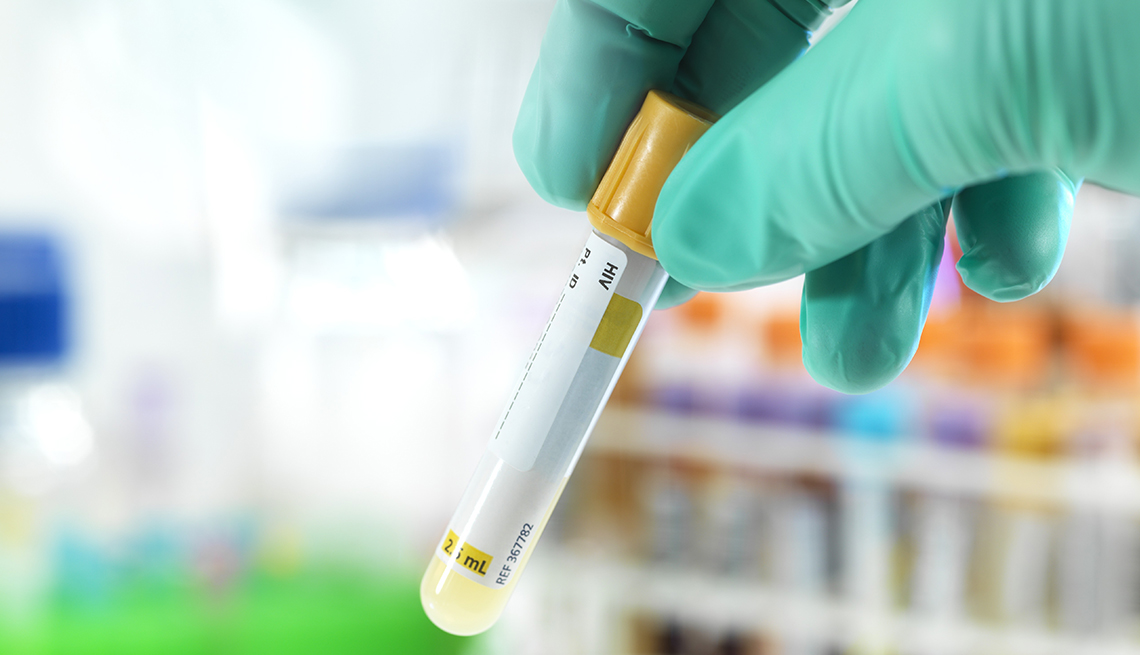
How hiv moved from death sentence to chronic condition
- Select a language for the TTS:
- UK English Female
- UK English Male
- US English Female
- US English Male
- Australian Female
- Australian Male
- Language selected: (auto detect) - EN
Play all audios:

"We've changed this from a disease that was almost universally fatal years ago to a disease that now isn't really even a disease — you can just prevent people from getting
sick if you treat them early enough,” Fauci says. "The area of treatment has been breathtaking in the sense of its effectiveness,” he says. Breakthroughs notwithstanding, HIV/AIDS
research has not slowed. Scientists are testing longer-lasting prevention and treatment therapies that would deliver virus-suppressing medication to patients every few months by injection or
implant, “so that people don't have to be thinking about taking a single drug every single day of their life,” Fauci says. “It's fine-tuning, to make it much more
user-friendly." These longer-lasting drugs could be especially beneficial to younger HIV and at-risk patients who aren't used to taking daily pills, Whitman-Walker's Lewis
says. Older adults with HIV, however, may already take daily medications to manage chronic conditions, “and if they're very used to taking a pill every day, taking an HIV pill is just
no big deal,” she says. HIV vaccine trials are also underway, but “the big buzz now,” as Fauci puts it, is a national plan that would reduce new HIV infections by 90 percent in the next 10
years. “The way you do that is by aggressively going out, testing people, and those who are infected, treating them immediately” to prevent the spread of HIV, he explains. It also involves
making preventative medications available to those at high risk of infection, including people who have an HIV-positive sexual partner or have multiple sexual partners. People who inject
drugs or have sex with people who inject drugs are also considered high risk, according to the U.S. Department of Health and Human Services. Cities such as San Francisco and New York, once
epicenters of the AIDS epidemic, have “dramatically diminished” the number of new infections with this test-and-treat approach, Fauci says. Now, the public health community is “working fast
and furious” to help other hard-hit cities, counties and states — including Alabama, Arkansas, Kentucky, Mississippi, Missouri, Oklahoma and South Carolina — achieve similar results. WORKING
TOWARD A CURE Viral suppression is one way experts are trying to end the AIDS epidemic. Others are working to eradicate the disease completely, by way of a cure. There are a number of
reasons why a cure is needed, says Rowena Johnston, vice president and director of research at AMFAR, the Foundation for AIDS Research. For instance, the emergence of drug resistance could
make HIV “increasingly difficult to treat” in the future. There's also the cost of HIV care, which can exceed $379,000 (in 2010 dollars) in a person's lifetime, according to
Centers for Disease Control and Prevention (CDC). Clearing an HIV infection would also clear someone of the stigma attached to the disease. Beliefs that HIV and AIDS only affect certain
groups of people — such as drug users and gay men — are rooted in fear from images and misinformation that spread in the early days of the disease, the CDC says. “And as much progress as
we've made in the last 40 years of HIV, there really is still a significant stigma attached,” Johnston says.
